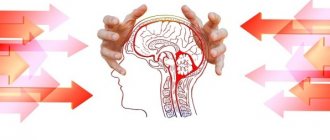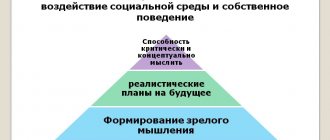What are reflexes
This may sound scary, but we do not have one hundred percent control over all our actions or the processes of our body. We are, of course, not talking about decisions to get married or go to university, but about smaller, but very important actions. For example, about jerking our hand when accidentally touching a hot surface or trying to hold on to something when we slip. It is in such small reactions that reflexes appear, controlled by the nervous system.
Most of them are inherent in us at birth, others are acquired later. In a sense, we can be compared to a computer, into which, even during assembly, programs are installed in accordance with which it operates. Later, the user will be able to download new programs, add new action algorithms, but the basic settings will remain.
Reflexes are not limited to humans. They are characteristic of all multicellular organisms that have a CNS (central nervous system). Various types of reflexes are carried out constantly. They contribute to the proper functioning of the body, its orientation in space, and help us quickly respond to danger. The absence of any basic reflexes is considered a disorder and can make life much more difficult.
What reflexes prevent us from living?
Our brains look for ways to make life easier, so we develop habits that don't require a lot of energy. But not all of them help us become happier in life. On the contrary, some pull us back and literally prevent us from achieving success.
The famous experiment of I.P. Pavlov was simple : the light turns on - they bring food - the dog salivates. After the reaction was consolidated, the plate was taken away, but after turning on the light bulb, saliva was still produced. So we do: we habitually react to everything around us, without thinking about the reasons:
- As a child, we were offended by a red-haired boy - we consider all red-haired people to be aggressive.
- The teacher with high hair gave us bad grades - we expect injustice from women with high hair.
- A lanky classmate named Andrey was constantly teased - we prefer to avoid all tall Andreys.
We initially interact with such people in a hostile manner because we are not aware of our reactions. Even carefully hidden wariness is read on a subconscious level. We see enemies in such people, we notice only the negative sides, we attack - they defend themselves. So the only reason why others seem angry and aggressive to us is ourselves.
What to do?
- Step one: understand that your offenders and your new acquaintances are different people.
- Step two: monitor your reactions, and then take responsibility for their manifestation.
This simple technique will have double the benefits. Firstly, it will get rid of grievances, which take up a lot of internal energy. Secondly, it will help us discover a lot of opportunities for communication that we have been avoiding.
Take the perception type test
Reflex arc
Reflex reactions occur instantly, sometimes you don’t have time to think about them. But despite all their apparent simplicity, they are extremely complex processes. Even the most basic action in the body involves several parts of the central nervous system.
The irritant acts on the receptors, the signal from them travels along the nerve fibers and goes directly to the brain. There, the impulse is processed and sent to the muscles and organs in the form of a direct instruction to action, for example, “raise your hand,” “blink,” etc. The entire path that the nerve impulse travels is called a reflex arc. In its full version it looks something like this:
- Receptors are nerve endings that perceive a stimulus.
- Afferent neuron - transmits a signal from receptors to the center of the central nervous system.
- The interneuron is a nerve center that is not involved in all types of reflexes.
- Efferent neuron - transmits a signal from the center to the effector.
- An effector is an organ that carries out a reaction.
The number of arc neurons may vary, depending on the complexity of the action. The information processing center can pass through either the brain or the spinal cord. The simplest involuntary reflexes are carried out by the spinal cord. These include changes in the size of the pupil when the lighting changes or withdrawal when pricked with a needle.
General mechanism of reflex formation
Neurons and the pathways of nerve impulses during a reflex act form a so-called reflex arc:
stimulus - receptor - neuron - effector - response.
In humans, most reflexes are carried out with the participation of at least two neurons - sensitive and motor (motoneuron, executive neuron). The reflex arcs of most reflexes also involve interneurons (one or more). Any of these neurons in humans can be located both inside the central nervous system (for example, reflexes with the participation of central chemo- and thermoreceptors) and outside it (for example, reflexes of the metasympathetic division of the ANS).
What types of reflexes are there?
The most common classification is the division of reflexes into conditioned and unconditioned, depending on how they were formed. But there are other groups, let’s look at them in the table:
| Classification sign | Types of reflexes |
| By nature of education | Conditional Unconditional |
| According to biological significance | Genital Defensive Approximate Digestive |
| By type of executive body | Motor (locomotor, flexor, etc.) Vegetative (excretory, cardiovascular, etc.) |
| By influence on the executive body | Exciting Brake |
| By type of receptor | Exteroceptive (olfactory, cutaneous, visual, auditory) Proprioceptive (joints, muscles) Interoceptive (endings of internal organs). |
Classification
Based on a number of characteristics, reflexes can be divided into groups [3].
- By type of education: conditioned and unconditioned reflexes.
- By type of receptor: exteroceptive (skin, visual, auditory, olfactory), interoceptive (from receptors of internal organs) and proprioceptive (from receptors of muscles, tendons, joints)
- By effectors: somatic or motor (skeletal muscle reflexes), for example flexor, extensor, locomotor, statokinetic, etc.; vegetative - digestive, cardiovascular, sweating, pupillary, etc.
- According to biological significance: defensive, or protective, digestive, sexual, orientation.
- According to the degree of complexity of the neural organization of reflex arcs, a distinction is made between monosynaptic, the arcs of which consist of afferent and efferent neurons (for example, knee), and polysynaptic, the arcs of which also contain one or more interneurons and have two or more synaptic switches (for example, flexor pain).
- According to the nature of the influences on the activity of the effector: excitatory - causing and enhancing (facilitating) its activity, inhibitory - weakening and suppressing it (for example, a reflex increase in heart rate by the sympathetic nerve and a decrease in it or cardiac arrest by the vagus nerve).
- Based on the anatomical location of the central part of the reflex arcs, spinal reflexes and cerebral reflexes are distinguished. Neurons located in the spinal cord are involved in the implementation of spinal reflexes. An example of the simplest spinal reflex is the withdrawal of a hand from a sharp pin. Brain reflexes are carried out with the participation of brain neurons. Among them there are bulbar, carried out with the participation of neurons of the medulla oblongata; mesencephalic - with the participation of midbrain neurons; cortical - with the participation of neurons in the cerebral cortex. There are also peripheral reflexes carried out by the metasympathetic division of the ANS without the participation of the brain and spinal cord.
Unconditional
Unconditioned reflexes are hereditarily transmitted (innate) reactions of the body, inherent to the entire species. They perform a protective function, as well as the function of maintaining homeostasis (constancy of the internal environment of the body).
Unconditioned reflexes are inherited, unchangeable reactions of the body to certain influences of the external or internal environment, regardless of the conditions for the occurrence and course of reactions. Unconditioned reflexes ensure the body's adaptation to constant environmental conditions. The main types of unconditioned reflexes: food, protective, orientation, sexual.
An example of a defensive reflex is the reflexive withdrawal of the hand from a hot object. Homeostasis is maintained, for example, by a reflex increase in breathing when there is an excess of carbon dioxide in the blood. Almost every part of the body and every organ is involved in reflex reactions.
The simplest neural networks, or arcs (according to Sherrington), involved in unconditioned reflexes, are closed in the segmental apparatus of the spinal cord, but can also be closed higher (for example, in the subcortical ganglia or in the cortex). Other parts of the nervous system are also involved in reflexes: the brain stem, cerebellum, and cerebral cortex.
The arcs of unconditioned reflexes are formed at the time of birth and remain throughout life. However, they can change under the influence of illness. Many unconditioned reflexes appear only at a certain age; Thus, the grasping reflex characteristic of newborns fades away at the age of 3-4 months.
An example of an unconditioned reflex in cats is their ability to land on all fours, regardless of the position the cat was in at the beginning of the fall and the height from which it fell. The landing reflex begins to appear in kittens at the age of 3-4 weeks and is consolidated by 6-7 weeks [4].
Neural organization of the simplest reflex
The simplest reflex in vertebrates is considered monosynaptic. If the arc of the spinal reflex is formed by two neurons, then the first of them is represented by a cell of the spinal ganglion, and the second is a motor cell (motoneuron) of the anterior horn of the spinal cord. The long dendrite of the spinal ganglion goes to the periphery, forming a sensitive fiber of a nerve trunk, and ends with a receptor. The axon of a neuron of the spinal ganglion is part of the dorsal root of the spinal cord, reaches the motor neuron of the anterior horn and, through a synapse, connects with the body of the neuron or one of its dendrites. The axon of the anterior horn motor neuron is part of the anterior root, then the corresponding motor nerve and ends in a motor plaque in the muscle.
Pure monosynaptic reflexes do not exist. Even the knee reflex, which is a classic example of a monosynaptic reflex, is polysynaptic, since the sensory neuron not only switches to the motor neuron of the extensor muscle, but also sends out an axonal collateral that switches to the inhibitory interneuron of the antagonist muscle, the flexor muscle.
Conditional
Main article: Conditioned reflexes
Conditioned reflexes arise during individual development and the accumulation of new skills. The development of new temporary connections between neurons depends on environmental conditions. Conditioned reflexes are formed on the basis of unconditioned ones with the participation of higher parts of the brain.
The development of the doctrine of conditioned reflexes is associated primarily with the name of I. P. Pavlov. He showed that a new stimulus can initiate a reflex response if it is presented for some time together with an unconditioned stimulus. For example, if you let a dog smell meat, it will secrete gastric juice (this is an unconditioned reflex). If you ring a bell at the same time as the meat, the dog’s nervous system associates this sound with food, and gastric juice will be released in response to the bell, even if the meat is not presented. Conditioned reflexes underlie acquired behavior
.
These are the simplest programs. The world around us is constantly changing, so only those who quickly and expediently respond to these changes can live successfully in it. As we gain life experience, a system of conditioned reflex connections develops in the cerebral cortex. Such a system is called a dynamic stereotype
. It underlies many habits and skills. For example, having learned to skate or bicycle, we subsequently no longer think about how we should move so as not to fall.
Unconditioned reflexes
Congenital reflexes are called unconditioned. They are transmitted genetically and do not change throughout life. Within them, simple and complex types of reflexes are distinguished. They are most often processed in the spinal cord, but in some cases the cerebral cortex, cerebellum, brainstem, or subcortical ganglia may be involved.
A striking example of unconditioned reactions is homeostasis - the process of maintaining the internal environment. It manifests itself in the form of regulation of body temperature, blood clotting during cuts, and increased breathing with increased amounts of carbon dioxide.
Unconditioned reflexes are inherited and are always tied to a specific species. For example, all cats land strictly on their paws; this reaction manifests itself in them already in the first month of life.
Digestive, orientation, sexual, protective - these are simple reflexes. They manifest themselves in the form of swallowing, blinking, sneezing, salivation, etc. Complex unconditioned reflexes manifest themselves in the form of individual forms of behavior, they are called instincts.
What is the difference between an unconditioned reflex and an instinct?
The concepts of instinct and unconditioned reflex are very similar. They are inherent in every living creature and do not require special study. However, their fundamental difference is that instinct is a sensory manifestation of a living being. This can be expressed in the performance of more or less meaningful actions. For example, mating games of a male to attract a female. Thus, there is no clear guarantee that the instinct will manifest itself.
It is impossible to avoid the appearance of an unconditional response of the body to a stimulus. Such examples of reflexes in humans can be taken from physiology: it is impossible to resist the twitching of a leg when a blow to the knee or not to pull your hand away from a hot object.
Conditioned reflexes
Unconditioned reflexes alone are not enough in the course of life. In the course of our development and acquisition of life experience, conditioned reflexes often arise. They are acquired by each individual individually, are not hereditary and can be lost.
They are formed with the help of the higher parts of the brain on the basis of unconditioned reflexes and arise under certain conditions. For example, if you show an animal food, it will produce saliva. If you show him a signal (lamp light, sound) and repeat it every time food is served, the animal will get used to it. Next time, saliva will begin to be produced when the signal appears, even if the dog does not see the food. Such experiments were first carried out by the scientist Pavlov.
All types of conditioned reflexes are developed in response to certain stimuli and are necessarily reinforced by negative or positive experience. They underlie all our skills and habits. On the basis of conditioned reflexes, we learn to walk, ride a bicycle, and can acquire harmful addictions.
History of reflex research.
The term itself was introduced by the French philosopher and mathematician Rene Descartes in the 17th century. Before the discovery of reflexes, it was believed that living beings were endowed with a soul that guided all actions. Descartes' idea at that time turned out to be revolutionary. He decided to eliminate the soul from the process of controlling the body's reactions and proved that the bodily structure is quite capable of coping with self-government.
Russian professor, one of the founders of psychology Ivan Mikhailovich Sechenov proved that any conscious or unconscious reactions of the body are controlled by reflexes. Even those phenomena of brain activity that we describe with the words “sadness”, “delight”, “mockery” are nothing more than the result of muscle contraction.
Russian physiologist, Nobel Prize laureate Ivan Petrovich Pavlov was the first to introduce the concept of “conditioned reflex”. Pavlov conducted most of his research on dogs and proved that four components are needed to form a reflex:
- Having the motivation to develop the habit of drinking water before breakfast.
- Stimulus (signal) – awakening.
- Repeating it many times is a daily reminder on your phone.
- Reinforcement by unconditional or satisfaction of a vital need - good health.
Today, knowledge about the brain is changing at a breakneck pace. Technologies like MRI have allowed new discoveries to be made about him. It turns out that the brain changes not only in childhood, but throughout life. Every time we acquire a new habit or master a skill, we change our brain. University of British Columbia researcher Dr. Lara Boyd calls this property “brain neuroplasticity.” Neuroplasticity of the brain persists at any age, which means we can change our habits at any time.
Excitation and inhibition
Each reflex is accompanied by excitation and inhibition. It would seem that these are absolutely opposite actions. The first stimulates the functioning of organs, the other is designed to inhibit it. However, they both simultaneously participate in the implementation of any types of reflexes.
Inhibition does not in any way interfere with the manifestation of the reaction. This nervous process does not affect the main nerve center, but dulls the others. This happens so that the excited impulse reaches strictly for its intended purpose and does not spread to organs that perform the opposite action.
When bending the arm, inhibition controls the extensor muscles; when turning the head to the left, it inhibits the centers responsible for turning to the right. Lack of inhibition would lead to involuntary and ineffective actions that would only get in the way.
Braking
External unconditional inhibition (innate) is carried out by the action of a very strong stimulus on the body. The termination of the conditioned reflex occurs due to the activation of nerve centers under the influence of a new stimulus (this is transcendental inhibition).
When the organism under study is exposed to several stimuli at the same time (light, sound, smell), the conditioned reflex fades, but over time the indicative reflex is activated and the inhibition disappears. This type of braking is called temporary.
Conditioned inhibition (acquired) does not arise on its own; it must be developed. There are 4 types of conditioned inhibition:
- Extinction (disappearance of a persistent conditioned reflex without constant reinforcement by the unconditioned);
- differentiation;
- conditional brake;
- delayed braking.
Inhibition is a necessary process in our life. In its absence, many unnecessary reactions would occur in the body that would not be beneficial.
Example of external inhibition (dog's reaction to a cat and the SIT command)
Animal reflexes
The unconditioned reflexes of many species are very similar to each other. All animals have a feeling of hunger or the ability to secrete digestive juice at the sight of food; when hearing suspicious sounds, many listen or begin to look around.
But some reactions to stimuli are the same only within a species. For example, hares run away when they see an enemy, while other animals try to hide. Porcupines, equipped with spines, always attack a suspicious creature, a bee stings, and possums pretend to be dead and even imitate the smell of a corpse.
Animals can also acquire conditioned reflexes. Thanks to this, dogs are trained to guard the house and listen to the owner. Birds and rodents easily get used to people feeding them and do not run away at the sight of them. Cows are very dependent on their daily routine. If you disrupt their routine, they produce less milk.
The meaning of the doctrine of reflexes
The doctrine of reflexes has given a lot to understanding the very essence of nervous activity. However, the reflex principle itself could not explain many forms of goal-directed behavior. Currently, the concept of reflex mechanisms has been supplemented by the idea of the role of needs in the organization of behavior; it has become generally accepted that the behavior of animals, including humans, is active in nature and is determined not only by certain stimuli, but also by plans and intentions that arise under influenced by certain needs. These new ideas were expressed in the physiological concepts of the “functional system” by P.K. Anokhin or “physiological activity” by N.A. Bernstein. The essence of these concepts boils down to the fact that the brain can not only adequately respond to stimuli, but also foresee the future, actively make behavioral plans and implement them in action. The idea of an “acceptor of action”, or a “model of the required future”, allows us to talk about “ahead of reality”.
Human reflexes
Like other species, many of our reflexes appear in the first months of life. One of the most important is sucking. With the smell of milk and the touch of the mother's breast or a bottle that imitates it, the baby begins to drink milk from it.
There is also a proboscis reflex - if you touch the baby’s lips with your hand, he sticks them out with a tube. If the baby is placed on his stomach, his head will necessarily turn to the side, and he himself will try to rise. With the Babinski reflex, stroking the baby's feet causes the toes to fan out.
Most of the very first reactions accompany us only for a few months or years. Then they disappear. Among the types of human reflexes that remain with him for life: swallowing, blinking, sneezing, olfactory and other reactions.
Pathological reflexes
Main article: Pyramid signs
Pathological reflexes are a neurological term that refers to reflex reactions that are unusual for a healthy adult. In some cases, they are characteristic of earlier stages of phylo- or ontogenesis.
Oral automatism reflexes are one of the manifestations of pseudobulbar syndrome, which occurs with bilateral damage to the pyramidal tracts going to the motor nuclei of the glossopharyngeal, vagus, accessory and hypoglossal nerves (caudal group of cranial nerves). These include: Proboscis reflex, Karchikyan's distance-oral reflex, Astvatsaturov's naso-labial reflex, Marinescu-Radovici's Palmo-mental reflex, Yanyshevsky's “Bulldog” reflex.
Pathological wrist reflexes include: Tremner, Jacobson-Lask, Zhukovsky, Bekhterev carpal-digital reflex, superior Rossolimo reflex, large-finger flexion reflex Klippel-Weil.
Pathological foot reflexes are divided into extension and flexion. The first include: Oppenheim reflex, Gordon reflex, Schaeffer reflex, Babinsky reflex, Chaddock reflex, Bing reflex, Strumpel reflex. The second include: the lower Rossolimo reflex, Bekhterev-Mendel Reflex, Zhukovsky-Kornilov Reflex, Bekhterev Reflex, Puusepp Reflex.
One of the pathognomonic signs of damage to the pyramidal tract is clonus. Manifested by rapid and rhythmic contractions of a muscle or group of muscles in response to their stretching. Foot clonus is caused by a patient lying on his back, and patella clonus is caused by a patient lying on his back with his legs straight.
Reflex friendly movement of a limb accompanying the voluntary movement of another limb is called Synkinesis. Synkinesis can be either physiological (for example, flapping your arms while running or walking quickly) or pathological. Pathological synkinesis is divided into 3 types: global synkinesis, imitation synkinesis, and coordinator synkinesis. Synkinesias develop not in the acute, but in the remote period of the underlying disease, which led to damage to the pyramidal tracts. Their pathogenesis is not fully understood. They are often perceived by patients with spinal injury as a sign of restoration of nerve conduction of the spinal cord.










